Calling setOpaque(false) on the upper JPanel should work.
From your comment, it sounds like Swing painting may be broken somewhere -
First - you probably wanted to override paintComponent() rather than paint() in whatever component you have paint() overridden in.
Second - when you do override paintComponent(), you'll first want to call super.paintComponent() first to do all the default Swing painting stuff (of which honoring setOpaque() is one).
Example -
import java.awt.Color;
import java.awt.Graphics;
import javax.swing.JFrame;
import javax.swing.JPanel;
public class TwoPanels {
public static void main(String[] args) {
JPanel p = new JPanel();
// setting layout to null so we can make panels overlap
p.setLayout(null);
CirclePanel topPanel = new CirclePanel();
// drawing should be in blue
topPanel.setForeground(Color.blue);
// background should be black, except it's not opaque, so
// background will not be drawn
topPanel.setBackground(Color.black);
// set opaque to false - background not drawn
topPanel.setOpaque(false);
topPanel.setBounds(50, 50, 100, 100);
// add topPanel - components paint in order added,
// so add topPanel first
p.add(topPanel);
CirclePanel bottomPanel = new CirclePanel();
// drawing in green
bottomPanel.setForeground(Color.green);
// background in cyan
bottomPanel.setBackground(Color.cyan);
// and it will show this time, because opaque is true
bottomPanel.setOpaque(true);
bottomPanel.setBounds(30, 30, 100, 100);
// add bottomPanel last...
p.add(bottomPanel);
// frame handling code...
JFrame f = new JFrame("Two Panels");
f.setContentPane(p);
f.setDefaultCloseOperation(JFrame.EXIT_ON_CLOSE);
f.setSize(300, 300);
f.setLocationRelativeTo(null);
f.setVisible(true);
}
// Panel with a circle drawn on it.
private static class CirclePanel extends JPanel {
// This is Swing, so override paint*Component* - not paint
protected void paintComponent(Graphics g) {
// call super.paintComponent to get default Swing
// painting behavior (opaque honored, etc.)
super.paintComponent(g);
int x = 10;
int y = 10;
int width = getWidth() - 20;
int height = getHeight() - 20;
g.drawArc(x, y, width, height, 0, 360);
}
}
}
